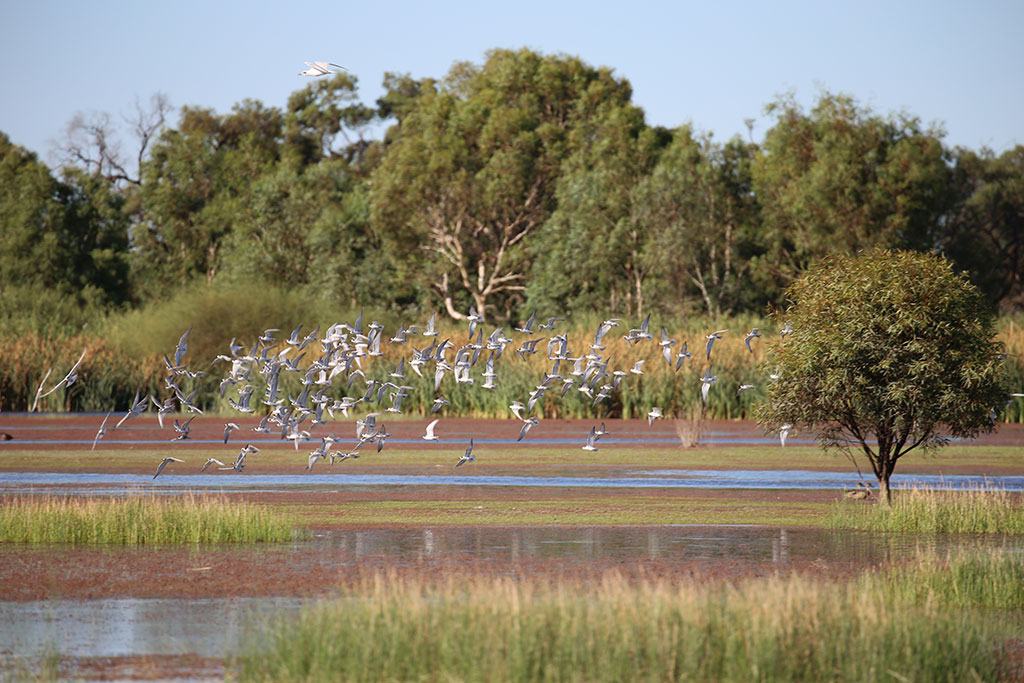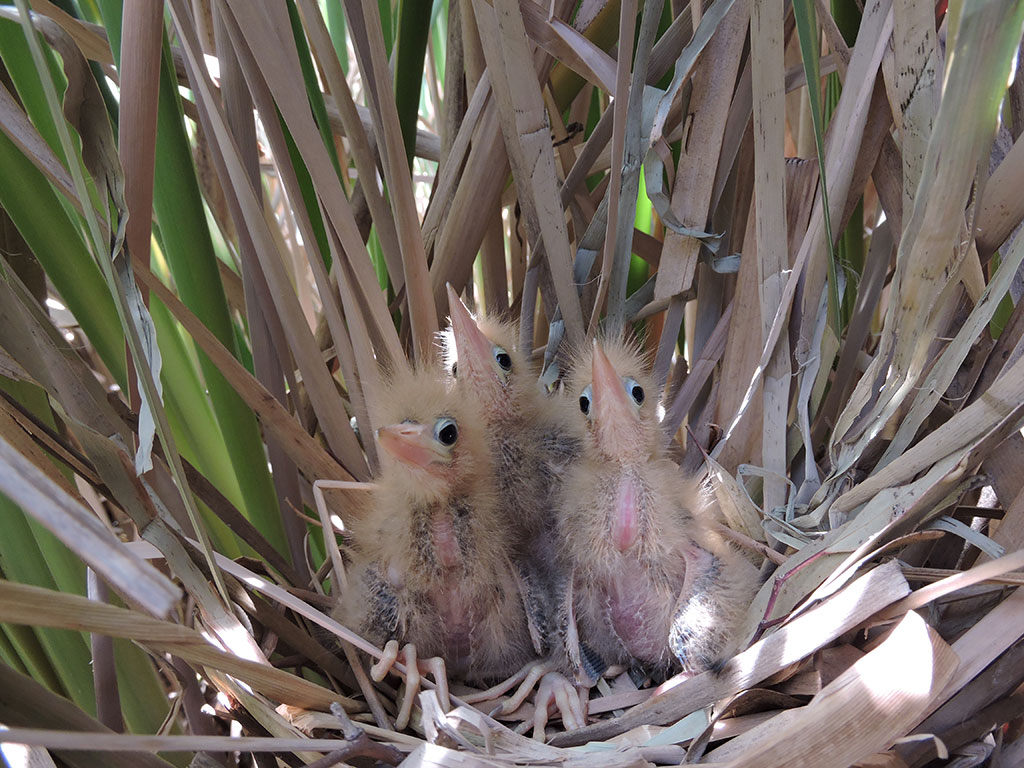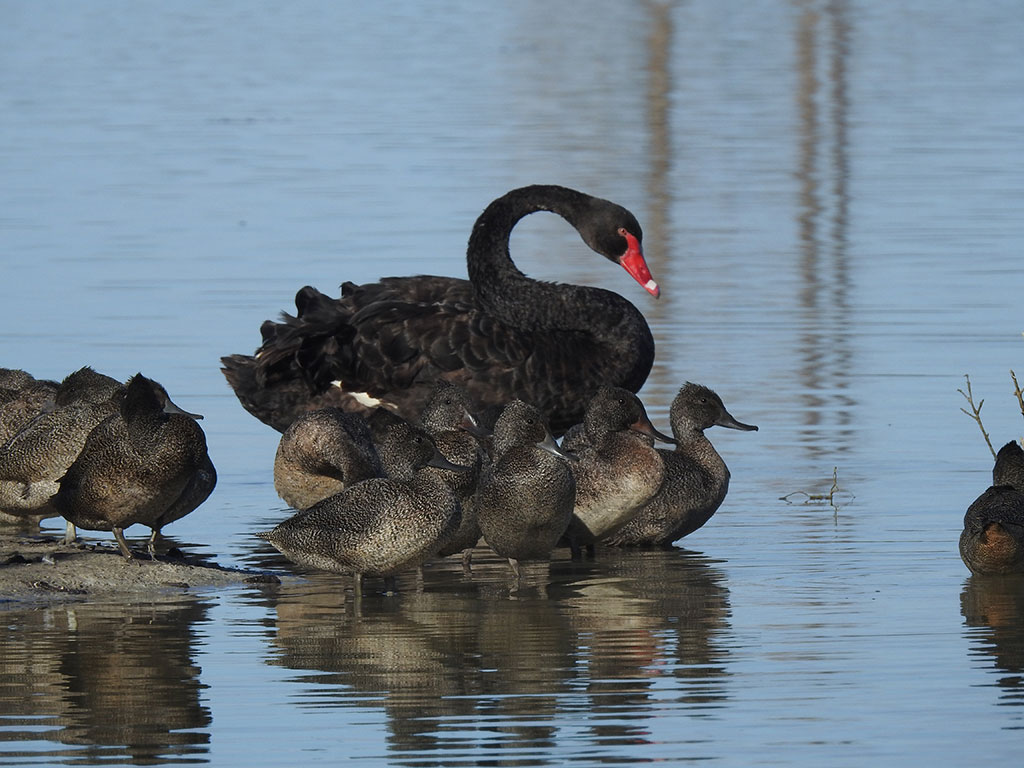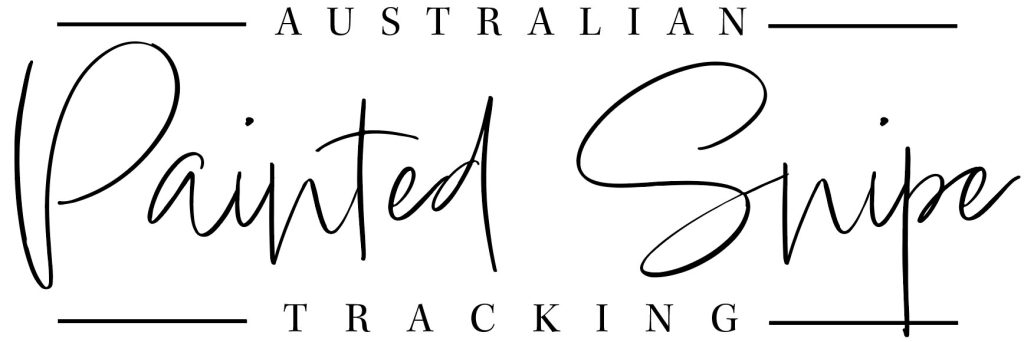In what is likely a world first, Peter and Sue Morton are actively managing the wetlands on their farm for the Australian Painted-snipe (APS). Clearly, these inspiring landholders have a serious case of the APS bug!
Quietly chipping away on their property, “Dundomallee”, north of Balranald in the New South Wales Riverina, their innovative work has been benefiting this imperilled species, along with a suite of other threatened wildlife. Their farm contains significant natural wetlands, including Paika Lake, and Peter and Sue work closely with the New South Wales Department of Planning and Environment, and the Commonwealth Environmental Water Holder, using water for the environment to restore and maintain their wetlands. The Mortons also constructed a wetland, known as “reedbeds”, that complements their natural assets and more easily allows for active, targeted management.

Peter and Sue have had the pleasure of several APS sightings at their wetlands, with up to four birds recorded, and although it’s been a few years since their last record, they are doing everything they can to attract them back.
“We have some control over our water levels, especially in our constructed wetland, and can readily create the all-important combination of mudflats, shallow water and low pin-rush cover that the Painted-snipe favour.”
“Ideally, we’d love it if a bird from our farm was among those being tracked”.
Peter and Sue do not sit idle, passively observing the wildlife in their wetlands. Instead, for APS, they maintain openness, limiting cumbungi expansion and removing Black Box “suckers” when they dominate, while controlling weeds like African Boxthorn and using earthworks to tweak the microtopography.
But for Peter and Sue, their interest in conservation doesn’t stop with the APS. By incorporating multiple habitats, they can support other key species. They have been delighted to support both the Australasian Bittern and Australian Little Bittern, the latter regularly using the reedbeds they created, with breeding confirmed. The Mortons also work closely with Fisheries NSW and now have endangered Southern Pygmy Perch breeding in the ponds that form part of their constructed wetland. Additionally, their wetlands support healthy populations of the endangered Southern Bell Frog and recently they’ve seen a flock of around 320 Freckled Duck, among a wide range of waterbird species.

Peter and Sue are demonstrating what’s possible when it comes to active, targeted wetland management.
“My family has a long history of interest in wildlife and ornithology, dating back to the egg collecting of my great grandfather in 1870s”, Peter recalled.
Peter and Sue said that one of the most rewarding parts of their work is the people and organisations they get to partner with.
“There are a lot of dedicated individuals working behind the scenes to help endangered species and we’re just happy to play our small part and help bring people together”.



